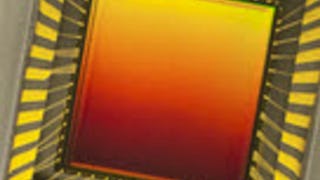Have you wondered how information from physical devices in the real world gets communicated to Smartphone processors? Do you want to make informed design decisions about sampling frequencies and bit-width requirements for various kinds of sensors? Do you want to gain expertise to affect the real world with actuators such as stepper motors, LEDs and generate notifications?

Enjoy unlimited growth with a year of Coursera Plus for $199 (regularly $399). Save now.

Internet of Things: Sensing and Actuation From Devices


Instructors: Ganz Chockalingam
23,184 already enrolled
Included with
(159 reviews)
Skills you'll gain
Details to know

Add to your LinkedIn profile
See how employees at top companies are mastering in-demand skills

Build your subject-matter expertise
- Learn new concepts from industry experts
- Gain a foundational understanding of a subject or tool
- Develop job-relevant skills with hands-on projects
- Earn a shareable career certificate

There are 10 modules in this course
What's included
2 videos2 readings
Before jumping into the lab section of this course, we would like to offer you a short lecture series. This lecture series will compliment everything you are about to do for the remainder of the course.
What's included
7 videos1 assignment
In this course, you will see a lot of new words and acronyms you might not be familiar with. If you feel comfortable with your knowledge of tech terminology, feel free to skip these lessons since they will not affect the overall integrity of the course. If you see something that you want to know a little more about, feel free to watch the video to gain insight on some basic concepts. We do expect you to know the majority of this material before going into the next module, we would recommend going through the lessons as a quick brush up.
What's included
17 videos3 readings1 assignment
Hello everyone and welcome to GPIO Programming! In order for the DragonBoard™ 410c to interact with the world there has to be an interface between them. For the purpose of this project the GPIO interface will serve as a way to sense and interact with the environment. In this lesson we will talk about General Purpose Input/Output pins and why they are important to this project. We will try to define them as well as provide other resources that could help further explain their purpose. In taking a look at the low speed expansion header on the DragonBoard™ 410c we will locate and explain all other GPIO interfaces. Since only the 12 GPIO will be necessary for this course, most of this lesson will focus on them. Once a greater understanding of the GPIO is achieved we will then access them via command prompt be it through a PC host or on board OS such as Ubuntu. Finally in this lesson we will show you how to make your first program/application capable of controlling a GPIO.
What's included
33 videos5 readings1 assignment
Time to build your very own amplifier! In order to interact with a wide variety of components, including many of the components that will be used throughout this course the voltage output from the DragonBoard™ 410c low speed expansion header will need to be amplified. In this lesson we will talk about a very basic voltage amplifier design. This design will be used to boost the signal voltage from the GPIO’s located on the DragonBoard™ 410c low speed expansion header. Once familiar with this basic amplifier, one can make adjustments to create personalized amplifiers geared toward specific future projects.
What's included
27 videos1 reading1 assignment
We are all basically made of motors, not really, but most robots are! When working with robotics, motors among several other things are some of the most important components you will chose for a project. In this lesson we will compare a variety of different motors widely used in DIY projects, especially DIY projects centered around robotics. We will take a deeper look at the stepper motor and what they are made of. We will then talk about the H-Bridge integrated circuit chip, why it is necessary for this projects and how it is used. Lastly, this lesson will guide you through the process of building a circuit capable of running a stepper motor. Schematics and code will be provided in order to gain a greater understanding of the stepper motor, as well as to facilitate the step by step instructions found in this lesson's documentation.
What's included
16 videos2 readings1 assignment
It was amazing when we turned our first LED on. What if we told you one was just the beginning! In this Module we will manipulate 8x8 LED matrices to execute a variety of custom schemes. We will program and build games, and digital displays that can be used for fun or business. The 8x8 LED matrix is just the beginning. Our code and ultimately our concepts can be applied to larger more intricate projects as you grow your IoT toolbox.
What's included
22 videos2 readings1 assignment
Using sensors that work on the infrared spectrum we can send and receive information. With this knowledge we are ready to program/build a way to use this to our benefit. In this Module you will gain access to code that will allow you take tremendous steps forward in your pursuit to claim of piece of the IoT movement. We are also going talk about the infrared spectrum on a higher level to gain a better understanding of how we are able to use it for these projects. By the end of this Module, you will be able to take a household remote and control various aspects of your DragonBoard™ 410c, especially peripherals through GPIO manipulation.
What's included
14 videos3 readings1 assignment
If you thought the IR remote module was fun, this will take your wireless control of the DragonBoard™ 410c to a whole new level. Here we will use multiple devices to communicate and control peripherals using Bluetooth. We will walk you through the steps we took in order to send and receive data through the Bluetooth modules on multiple devices. By the end of this module you will be able to control a variety of components (including GPIOs) on your DragonBoard™ 410c from other devices using close range Bluetooth connectivity. We are very excited to share this code with you, and we are even more excited to see all of the cool stuff you will all come up with when you are finished with this Module.
What's included
12 videos1 reading1 assignment1 peer review
Its time to expand on what we did in Course 2! That being said, I am sure you all had a blast creating your server and checking the status of various components on your board. What if I told you we can use some of these ideas to also control peripherals on your board! Well that is exactly what we are going to do in this Module. Its time to mix your software knowledge with your hardware skills to create a system that can both receive and send information using HTTP! Buckle up because we are about to introduce you to a new sensor while also providing you with everything you will need to officially use the internet for controlling your things (IoT pun)!
What's included
13 videos1 reading1 assignment
Earn a career certificate
Add this credential to your LinkedIn profile, resume, or CV. Share it on social media and in your performance review.
Instructors


Offered by
Explore more from Electrical Engineering
 Status: Free Trial
Status: Free TrialUniversity of California San Diego
 Status: Free Trial
Status: Free TrialUniversity of California San Diego

University of California San Diego
 Status: Free Trial
Status: Free TrialUniversity of California, Irvine
Why people choose Coursera for their career




Learner reviews
159 reviews
- 5 stars
69.18%
- 4 stars
20.75%
- 3 stars
5.03%
- 2 stars
3.77%
- 1 star
1.25%
Showing 3 of 159
Reviewed on Feb 8, 2018
Excellent, I recommend this course and specialization.
Reviewed on May 15, 2021
An exceptional Course on IOT , covering a vast array of important topics. Thank you Coursera!
Reviewed on May 29, 2020
Wonderful course of Coursera and faculty members having clear cut through knowledge. Thank you very much
Frequently asked questions
To access the course materials, assignments and to earn a Certificate, you will need to purchase the Certificate experience when you enroll in a course. You can try a Free Trial instead, or apply for Financial Aid. The course may offer 'Full Course, No Certificate' instead. This option lets you see all course materials, submit required assessments, and get a final grade. This also means that you will not be able to purchase a Certificate experience.
When you enroll in the course, you get access to all of the courses in the Specialization, and you earn a certificate when you complete the work. Your electronic Certificate will be added to your Accomplishments page - from there, you can print your Certificate or add it to your LinkedIn profile.
Yes. In select learning programs, you can apply for financial aid or a scholarship if you can’t afford the enrollment fee. If fin aid or scholarship is available for your learning program selection, you’ll find a link to apply on the description page.
More questions
Financial aid available,
¹ Some assignments in this course are AI-graded. For these assignments, your data will be used in accordance with Coursera's Privacy Notice.





